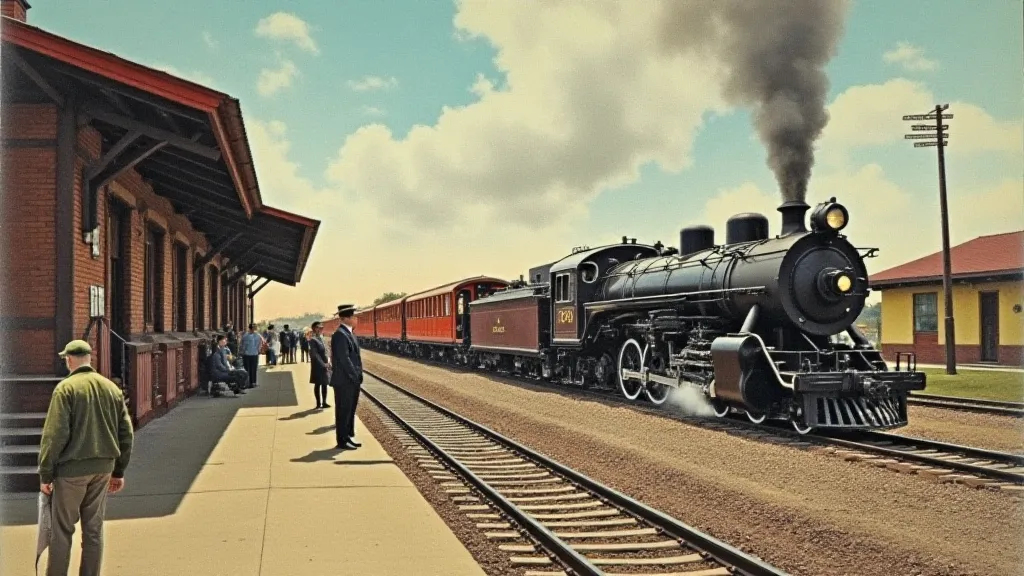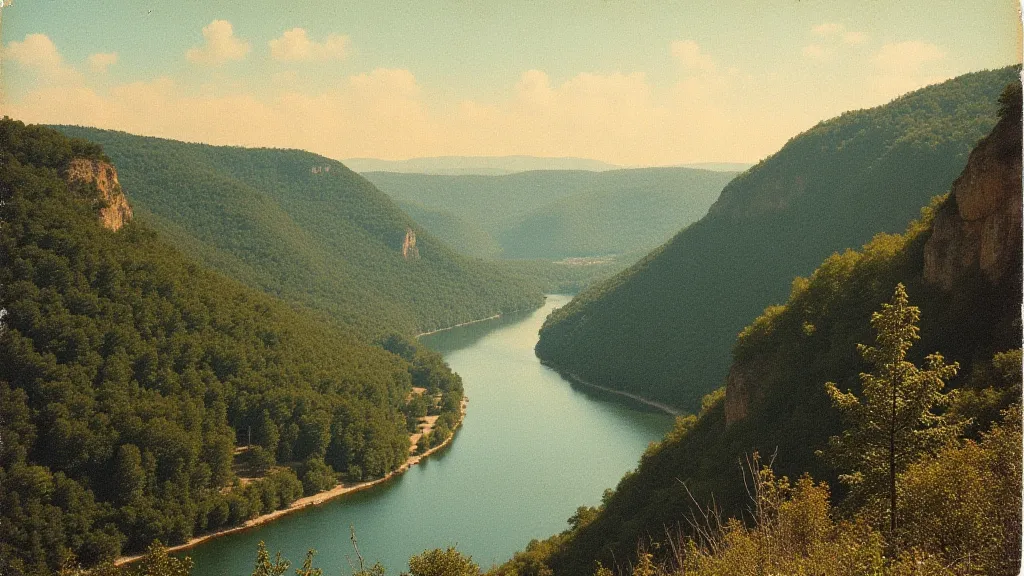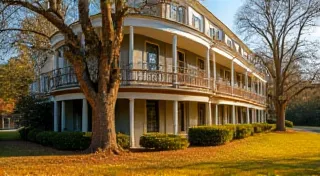Arkansas Postcard Collecting: Cotton, Railroads, and River Life
Arkansas, “The Natural State,” offers a rich tapestry of history and scenic beauty, a combination perfectly captured in its vintage postcards. Collecting Arkansas postcards provides a unique window into the state's past, offering glimpses of its booming industries, developing transportation networks, and the everyday lives of its citizens. This guide explores the key themes and must-have images for any Arkansas postcard collector, blending postcard history with Arkansas history.
The Rise of Cotton and Its Postcard Legacy
For much of Arkansas’s history, cotton was king. The expansion of cotton farming in the 19th century profoundly shaped the state's economy, demographics, and landscape. Postcards from this era frequently depict cotton fields, ginning operations, and the bustling ports where the harvested cotton was shipped down the Mississippi River. These aren’t just scenic views; they are visual records of a system built on intensive labor and significantly impacting the state's social structure.
Early Arkansas postcards featuring cotton plantations are often accompanied by patriotic messaging or depict idealized farm life. Understanding the historical context – the reliance on enslaved labor – is crucial when appreciating these cards. Look for cards from towns like Helena, Stuttgart, and Greenville, all major cotton-producing centers. Cards showcasing the "White Way" of cotton – a promotion campaign to increase cotton consumption – are also of significant collector interest.
Keywords: vintage postcards, postcard collecting, antique postcards, postcard history, postcard state guides, Arkansas postcards, Arkansas history

The Mighty Mississippi and the Age of Steamboats
The Mississippi River has always been vital to Arkansas's economy and culture. Before the railroads, steamboats reigned supreme, transporting goods and people along the river's winding course. Arkansas postcards from the late 19th and early 20th centuries often feature steamboats, riverfront scenes, and bustling ports like Fort Smith, Osceola, and Clarksdale (although Clarksdale is in Mississippi, the river connection is significant for Arkansas’s river communities).
Look for cards depicting specific steamboat names – the *Quapaw*, *Violet*, or *Belle of the River* – as these add a layer of specificity and rarity. Also, cards illustrating the riverfront in various towns are highly desirable. The imagery often showcases a sense of optimism and progress, illustrating the vital role of the river in Arkansas’s growth. Remember that many early postcards were printed in distant locations such as Rochester, NY, so look for “Made in Germany” or “Made in USA” or "Curt Teich" to identify printing location and age.
The Iron Horse Arrives: Arkansas and the Railroad Boom
The arrival of the railroads in Arkansas dramatically altered the state's landscape and economy. Railroads facilitated the transport of cotton, timber, and other goods, connecting Arkansas to national and international markets. Postcards from the late 1800s and early 1900s frequently portray railway stations, locomotives, and scenes along the rail lines.
Early rail lines like the Cairo Short Line and the Iron Mountain Railway were crucial for Arkansas’s development, and postcards documenting these lines are highly sought after. Look for cards depicting train depots in towns like Little Rock, Pine Bluff, and Texarkana. Cards showcasing the construction of tunnels and bridges, or highlighting the speed and efficiency of the railroad, offer insight into the era’s engineering marvels and the belief in technological progress.
Keywords: vintage postcards, postcard collecting, antique postcards, postcard history, postcard state guides, Arkansas postcards, Arkansas history

Beyond Industry: Capturing Arkansas Life
While industry and transportation dominate many Arkansas postcards, it’s important to seek out cards that offer glimpses into everyday life. Look for scenes of town squares, schools, churches, and local businesses. These cards, even if less visually striking than those depicting industry, provide a more nuanced understanding of Arkansas's past.
Cards featuring local landmarks – the Hot Springs bathhouses, the Crater of Diamonds, the Ozark Mountains – offer glimpses into the state’s natural beauty and recreational opportunities. Cards depicting events – fairs, parades, and festivals – offer insights into Arkansas's social and cultural life.
Identifying and Valuing Arkansas Postcards
As with any postcard collection, proper identification and valuation are key. Examine the publisher’s mark – Curt Teich, Valentine, and the Detroit Publishing Company were common printers. The publisher’s mark can provide clues about the card’s age and origin. Look for the date of publication (though many cards lack this). Consider the condition of the card; pristine condition commands a higher value.
Rarity is also a significant factor. Cards depicting obscure towns or events are generally more valuable than those of common destinations. Handwritten messages on the back can add interest and provide additional historical context, but be wary of forgeries.
Tips for Arkansas Postcard Collectors
- Specialize: Focus on a specific region of Arkansas, a particular industry, or a specific time period.
- Network: Join postcard collecting clubs and attend postcard shows.
- Research: Learn about Arkansas history and the postcard publishing industry.
- Be Patient: Building a valuable collection takes time and dedication.
Keywords: vintage postcards, postcard collecting, antique postcards, postcard history, postcard state guides, Arkansas postcards, Arkansas history

Conclusion
Collecting Arkansas vintage postcards offers a fascinating journey through the state’s past. By focusing on the themes of cotton farming, steamboats, railroads, and everyday life, collectors can build a collection that is both visually appealing and historically significant. From the bustling ports of the Mississippi River to the rugged peaks of the Ozark Mountains, Arkansas postcards offer a unique window into the state’s rich and vibrant history.





